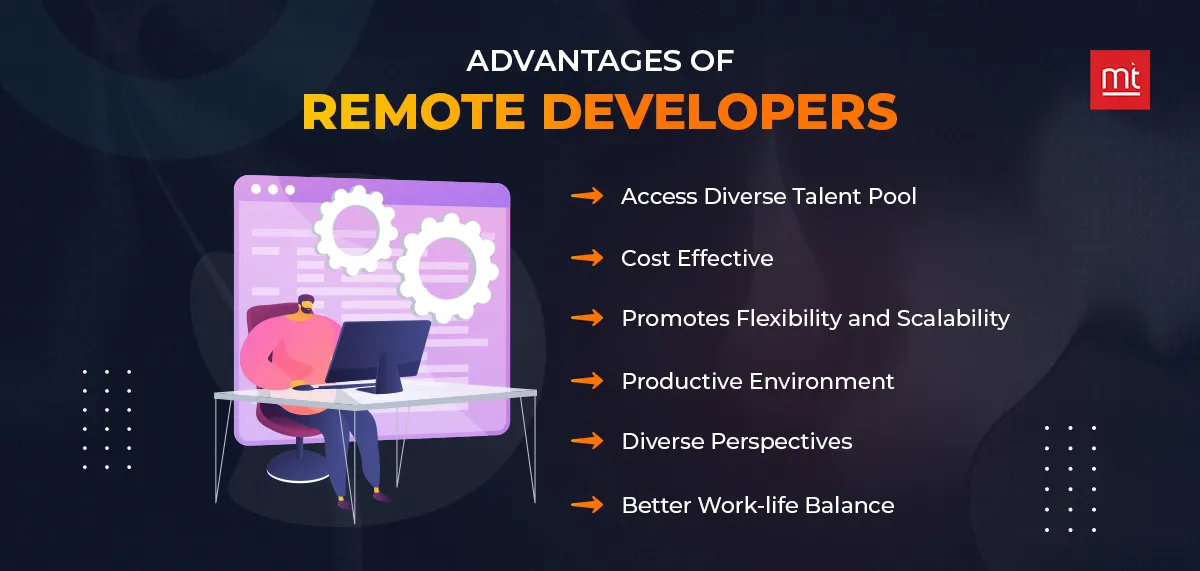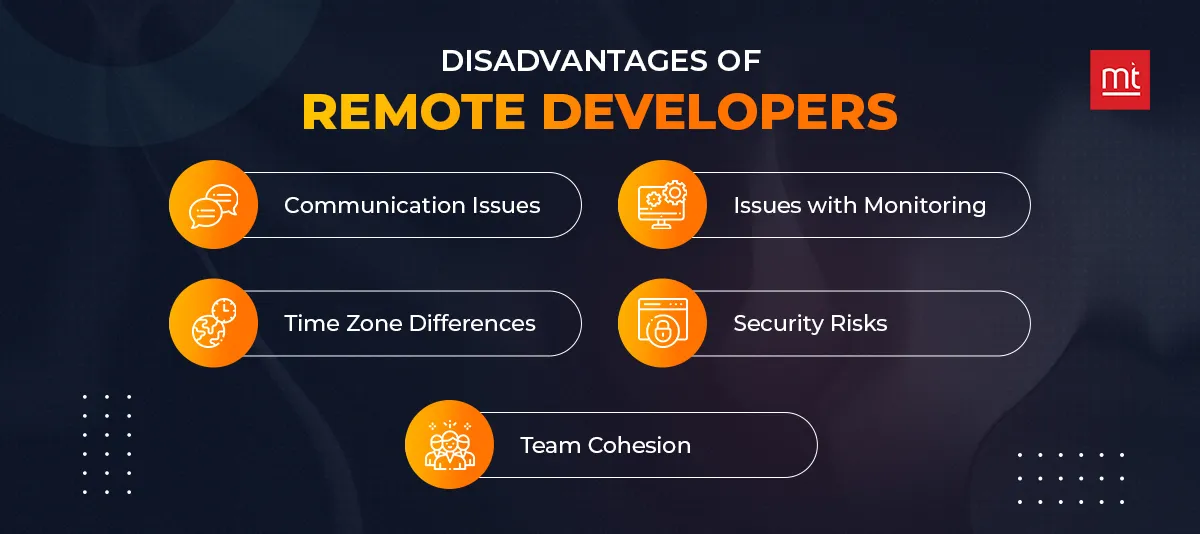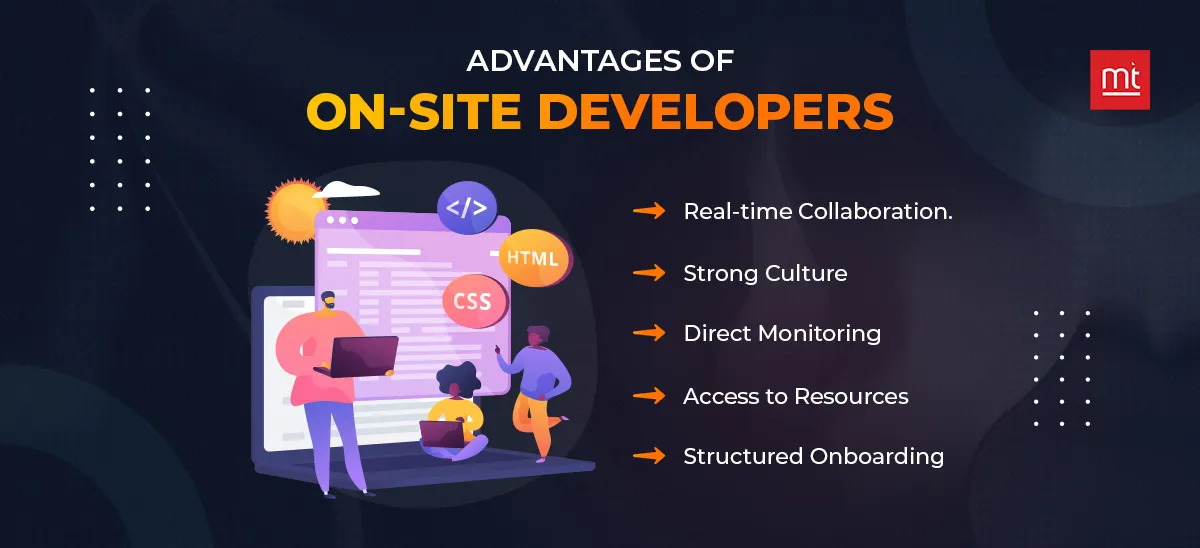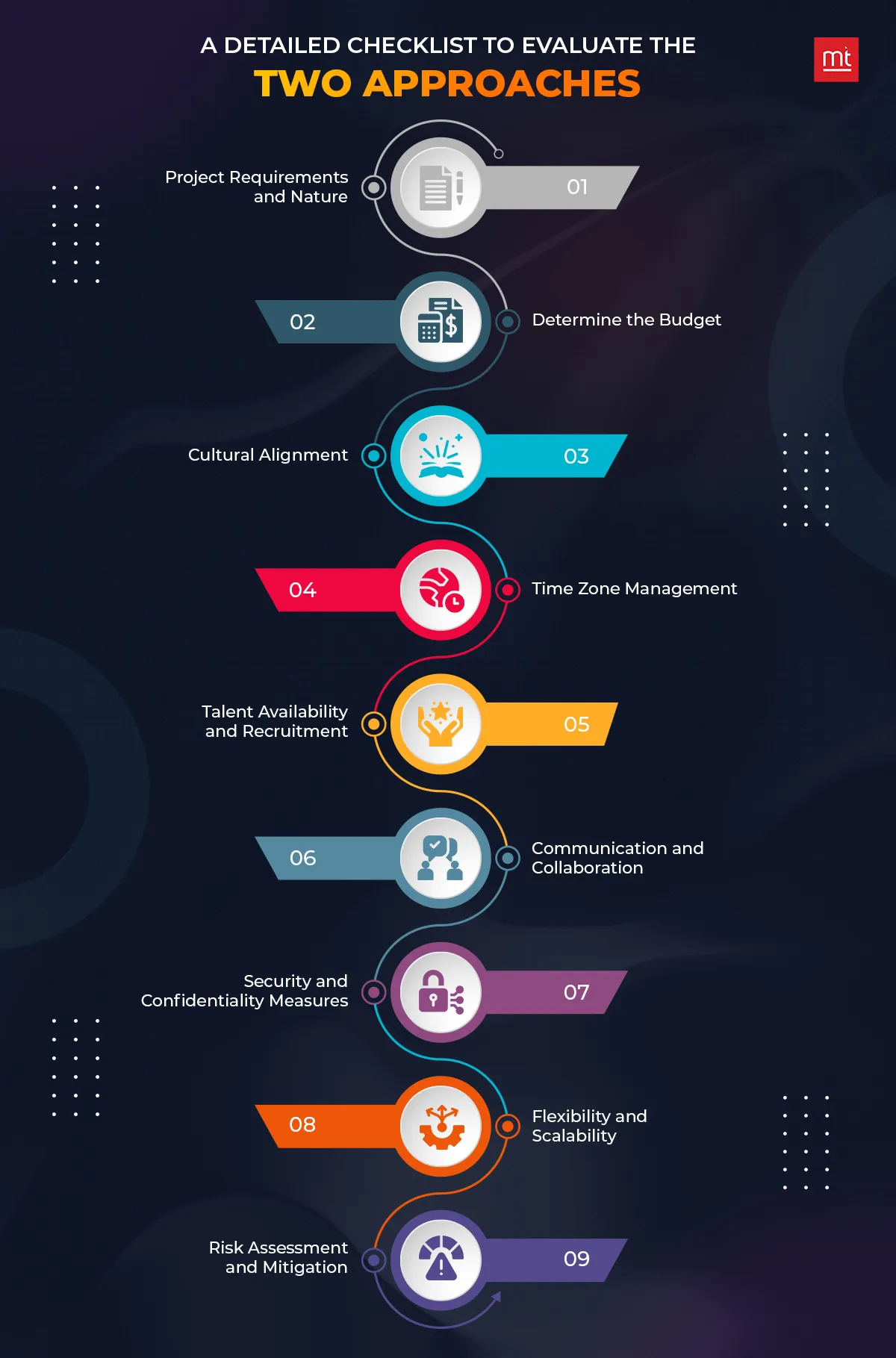Introducation:
What started off as a temporary shift in the wake of a Pandemic has gained permanence in several organizations around the world. Remote work has been accepted as one of the ways to encourage flexibility within the company, and retain the employees.
At least 58% of white collar job holders prefer to work from home three days a week. According to a state of remote work report by Buffer, at least 68% people have a positive experience with remote work.
This shift in the working landscape has made it crucial for companies to think through their hiring models. As more companies have a remote development team, you must realize the pros and cons of a remote versus on-site team before jumping the bandwagon.
A hiring model can help you source the right talent, embrace the perfect culture fit and ensure smooth integration of resources into your company. Remote working promotes flexibility and scalability. However, on-site can help you ensure cohesiveness and immediate collaboration.
This article will study remote developers vs on-site hiring approach in detail before helping you realize the best fit for your company.
Remote Developers Work Model: An Overview
Several mobile app development firms in USA have embraced the remote work model. In this model, the employees of an organization can work from anywhere in the world. They need to use the communication protocols and collaboration methods defined by the company.
It is crucial to ensure that the work is done in the allotted hours. This model fosters the virtual communication mode, where work gets done with emails and project management tools.
Moreover, the remote workers is judged for the outcomes of the job rather than the hours they have commited. This model proves to be cost-effective to the companies, and helps promote work-life balance. If you have a balanced and supportive work environment, you can even guarantee best quality work and maximum retention with this model.
Advantages of Remote Developers
Here are the key benefits of adopting the remote hiring culture.

1. Access Diverse Talent Pool
You are no longer restricted to your geographical location to search for skilled professionals. You can source your team from anywhere in the world. This would help you choose really skilled people with the relevant experience.
2. Cost Effective
Remote work reduces the burden of investing in office spaces and physical infrastructure. This would eliminate the overheads for the business, which makes remote work cost-effective.
3. Promotes Flexibility and Scalability
Remote work allows the developers to enjoy flexibility in terms of hours and location. additionally, the developers can work for diverse time zones. As your team is remote, you can scale up/down as per the project needs. Your team strength is no longer bound by the space you have.
4. Productive Environment
As remote developers don’t spend time commuting to the office or are less distracted, they are able to deliver more. The worker’s productivity is higher and they can accomplish the tasks faster.
5. Diverse Perspectives
One of the biggest advantages of remote developers is the diverse experiences they hold. This allows the entire team to work together and solve the problems faster. It also fosters innovation and improves project outcomes.
6. Better Work-life Balance
This is the greatest strength of remote work, where the developers can manage both work and life. They are motivated, as a result, which results in improved retention.
Disadvantages of Remote Developers
Remote developers may offer a plethora of benefits. However, there are some disadvantages too of hiring remote developers vs on site team.

1. Communication Issues
One of the biggest disadvantages of remote developers is the barriers to communication. There is heavy reliance on digital tools, which can lead to errors or delays in the projects.
2. Issues with Monitoring
The project manager may have limited ability to oversee the project and take ownership/accountability. It can hinder the progress monitoring abilities. Moreover, you might notice this can cause issues with quality and deadlines.
3. Time Zone Differences
As you operate in a different time zone from your developer, it can lead to issues during collaboration or coordination. You may need to schedule meetings, which can cause delays in responses.
4. Security Risks
Remote work can lead to securityissues, especially when you are dealing with sensitive information. Moreover, you might be allowing the developers to seek the information from their own devices, which could mean unsecure network access.
5. Team Cohesion
The team might feel like they are working in siloes, which can cause a disconnect. Moreover, it can dampen their morale and impact the team work.
On-site (In-House) Development: An Overview
The on-site development uses a traditional software development model. In this case, the teams work within an office space to deliver the solutions.
The on-site development allows you a chance to collaborate with other co-workers that offer face-to-face communication. It helps you to collaborate and solve the issues in real-time. It promotes real-time feedback sharing and brainstorming.
You can create a structured work environment with the on-site developers. The routine helps you cater to the business requirements and offer high-quality solutions.
Advantages of On-site (In-House) Developers
As on-site developers work from a traditional office environment, they pose several advantages.

1. Real-time Collaboration
On-site developers can connect in real-time to offer immediate communication. This would help the team members come to quick decisions and offer quality solutions to the problems. It can help you be more efficient.
2. Strong Culture
When the team members are physically present inside the office, it helps build a strong culture. There is a strong sense of cohesion as well. the shared experiences can help you improve social interactions and in-person communication. This will make positive contributions towards the project.
3. Direct Monitoring
Managers can get a real-time insight into the on-site developers, as they are in the office. Real-time monitoring helps enhance progress and performance. It can also boost productivity.
4. Access to Resources
On-site resources get access to the resources. They can access high-speed internet and hardware immediately. They can also access the right tools and tech support as needed.
5. Structured Onboarding
When you use structured onboarding and training programs, you let the new hires into the team seamlessly. It helps that you will be using fixed training programs and mentorship to maximize learning and skills.
Disadvantages of On-site (In-House) Developers
Here are all the disadvantages of on-site developers that can impact project efficiency.

1. Limited Flexibility
When you choose on-site developers, you are bound to them by location and schedule. This can lead to limited flexibility in terms of work hours or location. This can impact their work-life balance.
2. Increased Operational Costs
You will be paying more for the office space, technology and tools you aim to purchase. This would lead to a strain on the company budgets, especially if you are a limited income startup.
3. Geographical Constraints
You must choose developers from the limited talent pool you can access. This would restrict the skills and talent availability for you. you might even notice a shortage of skills and major gaps in the team, as a result.
A Detailed Checklist to Evaluate the Two Approaches (In-House vs Remote Developers)
How do you make a choice between in-house vs remote developers? Here’s a detailed checklist of all the factors to consider when making the choice.

#1. Project Requirements and Nature
You must assess the project scope and complexity to lead a project to success. Start by identifying the objectives of your project. Know the requirements in detail and the challenges you are likely to face.
You can use these details to underline the resources and time needed to accomplish the project. You can also use this to define the resources and anticipate the roadblocks.
You can break down the project into achievable milestones using the goals. It can also help track the progress of your project. These milestones can help you track progress and make the essential adjustments as needed.
The complexity is one of the best ways to identify the collaborative needs and milestones. You can use them to define the approach that best fits you.
#2. Determine the Budget
Budget is incredibly crucial while planning the hiring model. Mobile app development cost can influence the hiring decision significantly.
You may want to estimate the total budget you need to have to complete the development. This would include the resource allocation, office space, utilities and other equipment. In case of remote development, you can use the estimates to allocate for the communication tools, and equipment.
When you define the budget for each approach, you would know what is a cost-effective approach. Make sure to note the benefits against the cost for each approach. This would give you a better understanding of the approach that will work favourably for you.
#3. Cultural Alignment
When you are planning a development approach for your business, you must look at the company’s culture. This can help you foster a productive and cohesive environment.
When you are choosing a hiring model for the upcoming project, you must look at the values and culture of the company. This includes the work ethics and employee expectations.
You can use these elements to choose the development approaches that aligns with the company’s goals and vision. You can choose remote developers vs on-site if you require flexibility and scalability. However, if you want to continuously monitor the progress and instant collaboration, you can choose the on-site developers.
When you align your development approach with the hiring process, you can foster a sense of motivation in the team. It can lead to increased retention for the business.
#4. Time Zone Management
Smooth and effective collaboration is the key to a successful project. However, you must manage the time zone differences in your hiring approach to ensure the kind of collaboration you need.
When choosing the hiring model, you must start by determining the geographical locations and the stakeholders. You must identify the logistical challenges you will face in each of these cases.. at the same time, determine if the time zone differences will pose challenges for the business.
You must also consider asynchronous communication and the working hours while determining the approach. You should also check if the particular approach will fit your productivity, cohesion and other requirements.
#5. Talent Availability and Recruitment
The availability of the required talent for the job is another factor that may make you choose the proper hiring model. For example, if you have people in the same location with the required skills, you don’t need to move beyond on-site hiring model.
However, if your potential candidates reside abroad or in faraway countries, you need to go with a remote hiring approach.
If you are planning to adopt mobile app development trends, you may want to tap into varied skills and expertise. This would mean going with the remote hiring approach, as you may not find all the skills in the current landscape.
However, if you need a basic or even advanced app developed, and you know all the skilled resources are in-house, you can choose on-site hiring.
The recruitment process and onboarding delays may also cater to your app development hiring approaches.
#6. Communication and Collaboration
The hiring also depends on how efficiently you can communicate and collaborate with your team members. For instance, if the remote hiring allows you to communicate seamlessly and ensure project success, it is a great option.
You can always use the current project management tools, video conferencing software and other solutions to improve collaboration.
The onsite developers vs remote model’s effectiveness depends on what is core to your business. Do you wish for more in-person interactions? Do you think whiteboard sessions may be better than video conferences?
You may need to evaluate the communication and collaboration strengths for each case. Look into all the support you will gain for the option you are more likely to choose. This would help you find the best possible hiring model that guarantees best collaboration and encourages innovation.
#7. Security and Confidentiality Measures
As a business, you are constantly dealing with secure data that needs to be kept safe. You will need to ensure that the hiring model can take care of the data and intellectual property.
You might want to assess the security risks while choosing the remote and on-site hiring approaches. You must look at the potential vulnerabilities and threats to choose the right approach to work with the developers.
You may want to adopt the multi-factor authentication and data encryption measures while maintaining the security protocols and software.
You must look at how to manage the compliances, manage the sensitive data and intellectual property, whether you choose on-site or remote developers.
#8. Flexibility and Scalability
When you are planning a project, you must consider flexibility and scalability concerning development teams. The teams should be able to respond to the newer resource requirements or timeline needs immediately. In case there are scope changes, the team should be able to match their footsteps immediately.
You must evaluate how each of the development approach accommodates to these changes. You can check if scaling team size with remote development is easier or not.
While on-site is not as flexible as remote development, you will have better control on the team and visibility into the progress.
It is equally important to check how each one has a separate contingency plan to swiftly manage the newer changes and requirements. check if they have the right process that can help them scale the resources according to the needs.
The agility and adaptability of the team is what will help you choose a definitive approach.
#9. Risk Assessment and Mitigation
This is a crucial factor to consider when you are choosing a development approach. You might want to assess their ability to assess and mitigate the risks. It is equally crucial to check if they have the necessary understanding of vulnerabilities and security issues.
Look for how they communicate these issues and the resource limitations they pose. At the same time, assess how each team anticipates the obstacles and overcomes them proactively.
You need to check if they have the process to create effective risk mitigation strategies. Evaluate their collaboration methods and ways to address the risks in the initial stages. Check how they continuously monitor the project throughout the lifecycle. These aspects would help you determine the best choice between remote developers vs onsite.
Conclusion
Choosing between in-house vs remote developers is crucial for the best app development solutions. Each option has its own advantages and disadvantages. The advantages of remote developers lies in the fact that they are easy to scale and low cost. However, you may not have complete control over the developers or project in this case.
The advantages of on-site developers is that they can collaborate in real-time. however, they may not be completely flexible. You must evaluate the budget, scalability and project requirements before making the final decision.
You must ensure there is a way to continuously monitor the project’s progress for the best outcomes. ManekTech is one of the leading mobile app development firms in USA. You can hire dedicated developers from the company for quality and high-end solutions. We offer remote development hiring models that are cost-efficient and reliable for the business.
FAQs
1. Which is better, in-house development or remote development?
Both approaches are good. The choice depends on the budget, requirements, scalability needs and security issues of your project.
2. How do I decide whether to hire an in-house team or a remote team?
You must look at the complexity, communication requirements, talent needs and budget constraints while choosing the approach. You must look for an approach that aligns with your organization’s goals and values.
3. What are some tips for hiring remote developers?
When hiring the remote developers, you must vet the candidates, assess their communication skills and define the project expectations clearly. You can use the platforms, such as GitHub and Stack OverFlow to assess and source candidates.
4. How can I make sure that my remote developers are productive?
You can set clear goals and expectations, use the tools/resources and establish the communication channels. You can use this to foster a defined work culture.
About Author
Subscribe to Our Newsletter!
Join us to stay updated with our latest blog updates, marketing tips, service tips, trends, news and announcements!




















